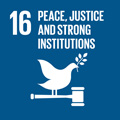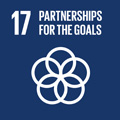- Docente: Alireza Jay Naghavi
- Credits: 4
- SSD: SECS-P/02
- Language: English
- Teaching Mode: Traditional lectures
- Campus: Rimini
- Corso: First cycle degree programme (L) in Economics of Tourism (cod. 8847)
-
from Nov 05, 2024 to Dec 04, 2024
Learning outcomes
The course aims to create a comprehensive understanding of the fundamental principles and types of intellectual property rights and their role in fostering innovation. Upon completion of this course students will be able to analyze and evaluate firm strategies to protect knowledge and the impact of intellectual property laws and regulations on social welfare, considering both benefits and challenges. They will be able to associate and apply theoretical knowledge to real-world scenarios, including current debates in the role of trade and international institutions in the global protection of intellectual property. The course will help the students develop a sense of responsibility and awareness regarding ethical implications of intellectual property decisions and their global impact on social equity and technological advancement.
Course contents
Pre-requisite: Basic Microeconomics.
1. Economics of Intellectual Property Rights
2. Innovation, Diffusion, and Social Returns
3. R&D, Competition, and Intellectual Property Rights
4. Business Management and Intellectual Property
5. Global Protection of Intellectual Property
6. Real-world case studies
a.Apple vs. Samsung
b. Bayer in India
c. Viagra in China
d. The LEGO group
Readings/Bibliography
C. Greenhalgh, M. Rogers, "Innovation, Intellectual Property, and Economic Growth", Princeton University Press, 2010. Chapters 1, 2, and 6.
K. Maskus, "Private Rights and Public Problems: The Global Economics of Intellectual Property in the 21st Century", Peterson Institute for International Economics, 2012. Chapters 3 and 5.
Articles handed out on recent real-world cases of patent disputes.
P. Belleflamme, M. Peitz, "Industrial Organization Markets and Strategies", 2nd edition, Cambridge University Press, 2015. Chapters 18 and 19.
Teaching methods
The course starts with lectures to introduce the economics of intellectual property rights and innovation from a private and social point of view. Material on recent real world recent patent disputes cases will then be distributed, followed by group work and presentations.
Assessment methods
The final grade of the course is based on the compulsory group project presentation (50%), and a one-hour final exam (50%).
The maximum possible score is 30 cum laude, in case all anwers are correct, complete and formally rigorous.
The grade is graduated as follows:
<18 failed
18-23 sufficient
24-27 good
28-30 very good
30 e lode excellent
Students can reject the grade obtained at the exam once. To this end, he/she must email a request to the instructor within the date set for registration. The instructor will confirm reception of the request within the same date.
Teaching tools
Lecture, presentations, discussion.
Office hours
See the website of Alireza Jay Naghavi
SDGs




This teaching activity contributes to the achievement of the Sustainable Development Goals of the UN 2030 Agenda.
